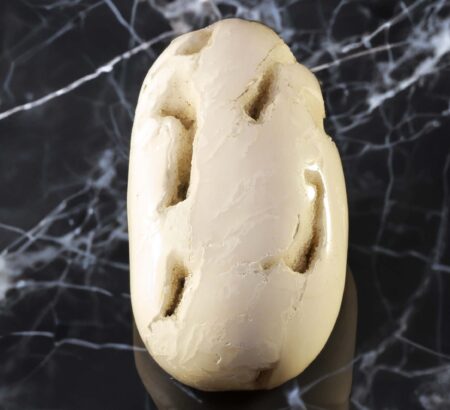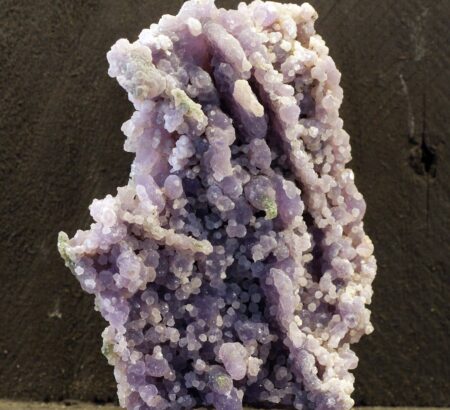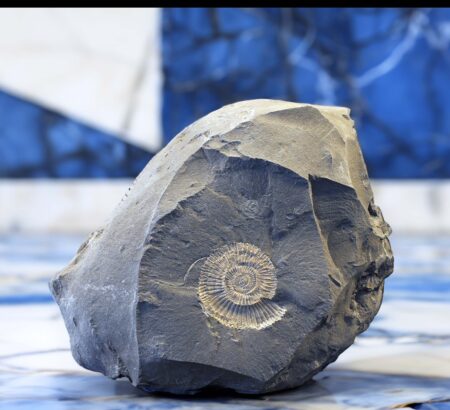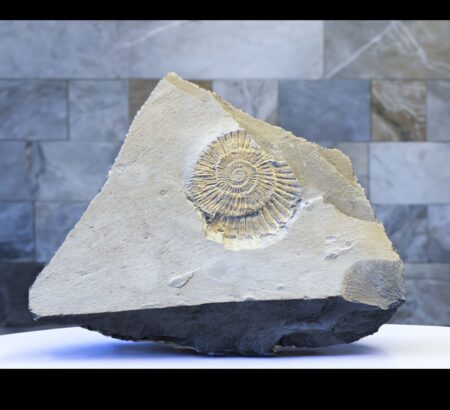Small Ancient Shark Fossil Mesacanthus
€ 20,00
Mesacanthus small archaic fossil shark.
Cool intact hand held shark fossil.
1 in stock
Description
Mesacanthus fossil mesacanthus
Mesacanthus, a small filter feeder, was an intriguing creature that lived during the Middle Devonian period (roughly 380 million years ago) in what is now known as Caithness, a region in the north of Scotland. This remarkable fish inhabited a freshwater lake system that covered this area at that time, making it a fascinating subject for paleontologists and those interested in the evolution of aquatic life.
One of the distinguishing features of Mesacanthus is its solitary dorsal spine. This unique characteristic sets it apart from other acanthodians, a group of extinct jawed fishes with spiny fins. The name of this fish is derived from the middle spine on its abdomen, pointing to its distinctive feature.
Mesacanthus, like other acanthodians, possessed a streamlined body shape, typically around 2-5 centimeters in length. Its elongated body allowed for efficient swimming and maneuverability in the water. This adaptation was particularly beneficial for the species’ filter-feeding lifestyle.
Feeding habits fossil mesacanthus
As a filter feeder, Mesacanthus primarily fed on microscopic organisms suspended in the water, such as plankton. Its specialized mouth and gill structures enabled it to extract these tiny food particles efficiently. The presence of well-developed gill rakers in Mesacanthus suggests its adaptation to sieving out small prey from the water column.
The freshwater lake system of Caithness, where Mesacanthus thrived, provided an abundance of food resources for this small fish. The planktonic organisms served as a vital source of sustenance, supporting the growth and survival of Mesacanthus as it competed with other aquatic organisms for resources within this ecosystem.
The remains of fossil Mesacanthus found in Caithness have provided valuable insights into the ancient aquatic habitats of the Middle Devonian period. These fossils not only contribute to our understanding of the region’s paleoecology but also shed light on the evolutionary history of aquatic life. fossil mesacanthus
Studying Mesacanthus and its environment has allowed researchers to comprehend the ecological dynamics and interactions of organisms within this extinct freshwater lake system. It provides a glimpse into the ancient food webs and the role filter feeders like Mesacanthus played in sustaining the ecosystem’s delicate balance.
Additionally, Mesacanthus serves as an excellent bioindicator for paleontologists studying the environmental conditions of the Middle Devonian period. This fish’s presence indicates the existence of a freshwater lake system in Caithness during that time, providing crucial information about the climate, water chemistry, and geological factors that shaped this region’s ancient landscape. fossil mesacanthus
In conclusion
Mesacanthus, a small acanthodian from the Middle Devonian period found in the north of Scotland’s Caithness, offers valuable insights into the ancient aquatic ecosystems of this region. As a filter feeder, Mesacanthus relied on its distinctive dorsal spine and specialized feeding structures to extract microscopic organisms from the water column. The fossils found in Caithness have allowed researchers to reconstruct the ecological dynamics and understand the ancient aquatic habitats of the time. Mesacanthus stands as a testament to the diverse and remarkable life forms that once inhabited Scotland’s freshwater lake systems millions of years ago.
Additional information
| Weight | 0,125 kg |
|---|---|
| Dimensions | 8,5 × 6,5 × 1,1 cm |








Reviews
There are no reviews yet.